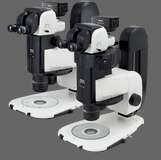- en Change Region
- Global Site
- Home
- Resources
- Applications
- Medicine/Clinical Sciences
- Veterinary
Applications
Veterinary

Veterinary medicine uses diagnostic techniques that are similar to those used for human medicine. Diagnosis is, however, made even more challenging by species differences in susceptibility to disease, species difference in the response to drugs, and the inability to obtain a direct description of symptoms from the 'patient'.
An office / veterinary clinic-based microscope is particularly useful for carrying out examinations of body fluids, secretions, and skin/hair scrapings. These may rapidly indicate the presence of parasitic infections, microbial infections, allergies, and neoplastic disease. More detailed laboratory examinations may involve further pathology, microbiology, molecular biology, haematology, and immunology-based tests. Key microscopy techniques include brightfield, darkfield, phase contrast, and DIC observations of unstained specimens, brightfield examinations of fixed specimens with histological stains, and fluorescence and immuno-differential staining techniques.
Digital imaging, digital slide, and telepathology technologies can help in the storage and archiving of slide specimens, creation of an audit trail, and in obtaining second opinions or returning results to remote locations.
- Home
- Resources
- Applications
- Medicine/Clinical Sciences
- Veterinary


